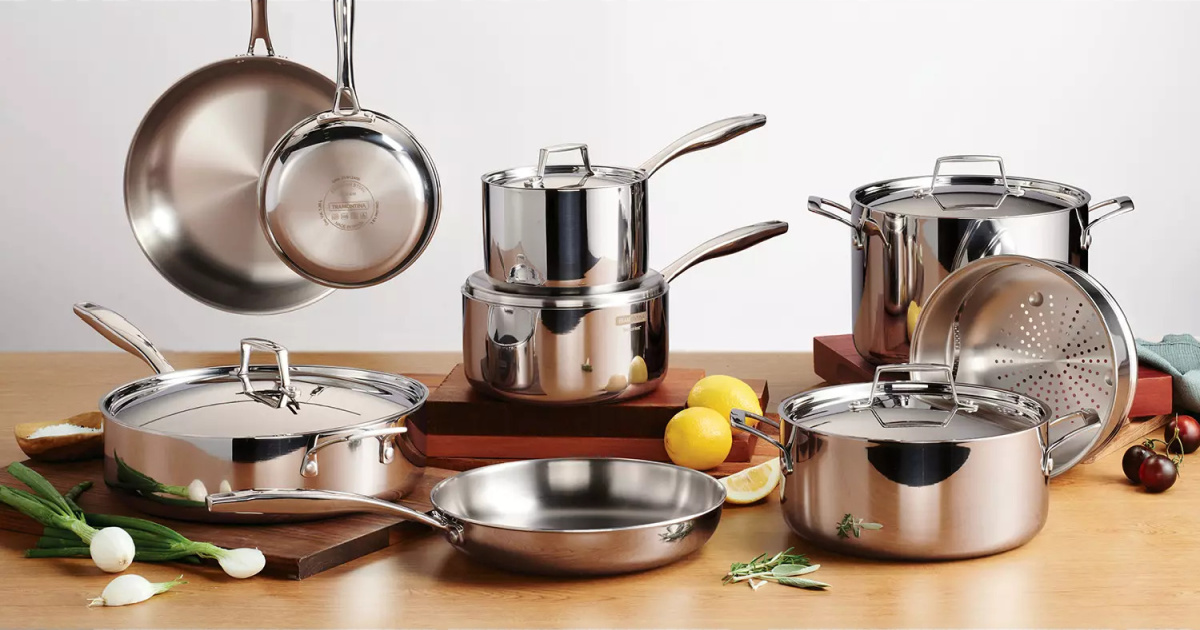Remember that shine and glow that you saw when you got this stainless-steel cookware? The arrival of a new set of stainless-steel cookware is a joyful occasion. Correct?
The fact is, as much as stainless-steel pots and pans conduct, distribute, and maintain heat beautifully, and are an absolute joy to have around the kitchen, they also need your care and attention. Bits of food will stick on, water spots will (too reliably) appear, and dings will happen. Yet, there is a light there at the end of the dark tunnel, a real light, not a train!
There are many handy solutions for the above regular wear and tear, keep reading:
- Get to drying as soon as possible, aka, immediately. If you cannot do this fast enough, then simply dampen the surface of the pot or pan, rub it with a moist sponge that’s been sprinkled with baking soda, and rinse as usual.
- Do not salt your water unless it is already boiled. When water is salted pre-boil, “pitting corrosion” can occur, which leaves tiny but irreparable pockmarks, as if from a nail, in the bottom of the pot.
- No need to add your chilled food if it is still cold. Cold food is more likely to stick to a hot pan, as the steel will contract when it comes in contact with a cooler temperature. So, if you’re cooking foods like meat, chicken, or fish straight from the refrigerator, allow them to sit at room temperature for 10 to 15 minutes
- Pre-heat phase is a pre-heat, not heating! Because high-quality stainless steel is effective at holding heat, preheating on high might lead to overheating your pan, and will burn your food by the way.
Is it burnt already? No problem though…
When it comes to removing burnt food from stainless steel, using boiling water may be the simplest solution. The heat from the water helps to loosen the leftover food from your pot, making it easier to remove. If you’re considering using the boiling water method, follow these steps:
- Scrub: Begin by scrubbing away as much food as possible with a non-abrasive scrubber.
- Add soap: Fill the pot or pan with water and a bit of dish soap.
- Submerge food: For this method to work, you must ensure the stuck-on food is completely submerged.
- Boil: Bring the water to a boil.
- Remove food: Once boiling, you can use a spatula to scrape away excess food with ease.
And to avoid burning or sticking, refer to the above points.





